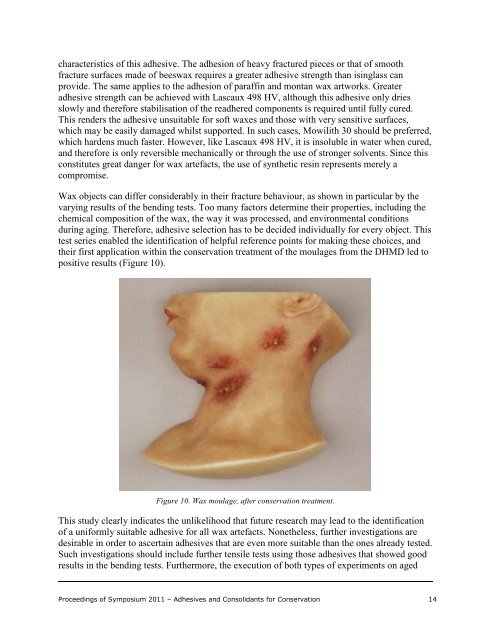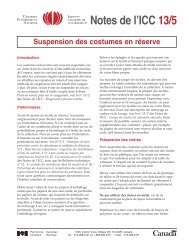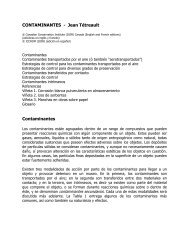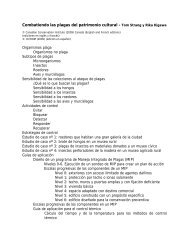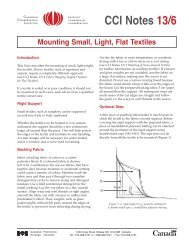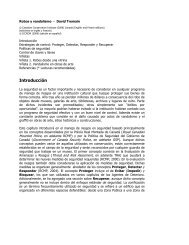Adhesives for Wax Artifacts - Institut canadien de conservation
Adhesives for Wax Artifacts - Institut canadien de conservation
Adhesives for Wax Artifacts - Institut canadien de conservation
Create successful ePaper yourself
Turn your PDF publications into a flip-book with our unique Google optimized e-Paper software.
characteristics of this adhesive. The adhesion of heavy fractured pieces or that of smooth<br />
fracture surfaces ma<strong>de</strong> of beeswax requires a greater adhesive strength than isinglass can<br />
provi<strong>de</strong>. The same applies to the adhesion of paraffin and montan wax artworks. Greater<br />
adhesive strength can be achieved with Lascaux 498 HV, although this adhesive only dries<br />
slowly and there<strong>for</strong>e stabilisation of the readhered components is required until fully cured.<br />
This ren<strong>de</strong>rs the adhesive unsuitable <strong>for</strong> soft waxes and those with very sensitive surfaces,<br />
which may be easily damaged whilst supported. In such cases, Mowilith 30 should be preferred,<br />
which har<strong>de</strong>ns much faster. However, like Lascaux 498 HV, it is insoluble in water when cured,<br />
and there<strong>for</strong>e is only reversible mechanically or through the use of stronger solvents. Since this<br />
constitutes great danger <strong>for</strong> wax artefacts, the use of synthetic resin represents merely a<br />
compromise.<br />
<strong>Wax</strong> objects can differ consi<strong>de</strong>rably in their fracture behaviour, as shown in particular by the<br />
varying results of the bending tests. Too many factors <strong>de</strong>termine their properties, including the<br />
chemical composition of the wax, the way it was processed, and environmental conditions<br />
during aging. There<strong>for</strong>e, adhesive selection has to be <strong>de</strong>ci<strong>de</strong>d individually <strong>for</strong> every object. This<br />
test series enabled the i<strong>de</strong>ntification of helpful reference points <strong>for</strong> making these choices, and<br />
their first application within the <strong>conservation</strong> treatment of the moulages from the DHMD led to<br />
positive results (Figure 10).<br />
Figure 10. <strong>Wax</strong> moulage, after <strong>conservation</strong> treatment.<br />
This study clearly indicates the unlikelihood that future research may lead to the i<strong>de</strong>ntification<br />
of a uni<strong>for</strong>mly suitable adhesive <strong>for</strong> all wax artefacts. Nonetheless, further investigations are<br />
<strong>de</strong>sirable in or<strong>de</strong>r to ascertain adhesives that are even more suitable than the ones already tested.<br />
Such investigations should inclu<strong>de</strong> further tensile tests using those adhesives that showed good<br />
results in the bending tests. Furthermore, the execution of both types of experiments on aged<br />
Proceedings of Symposium 2011 – <strong>Adhesives</strong> and Consolidants <strong>for</strong> Conservation 14


